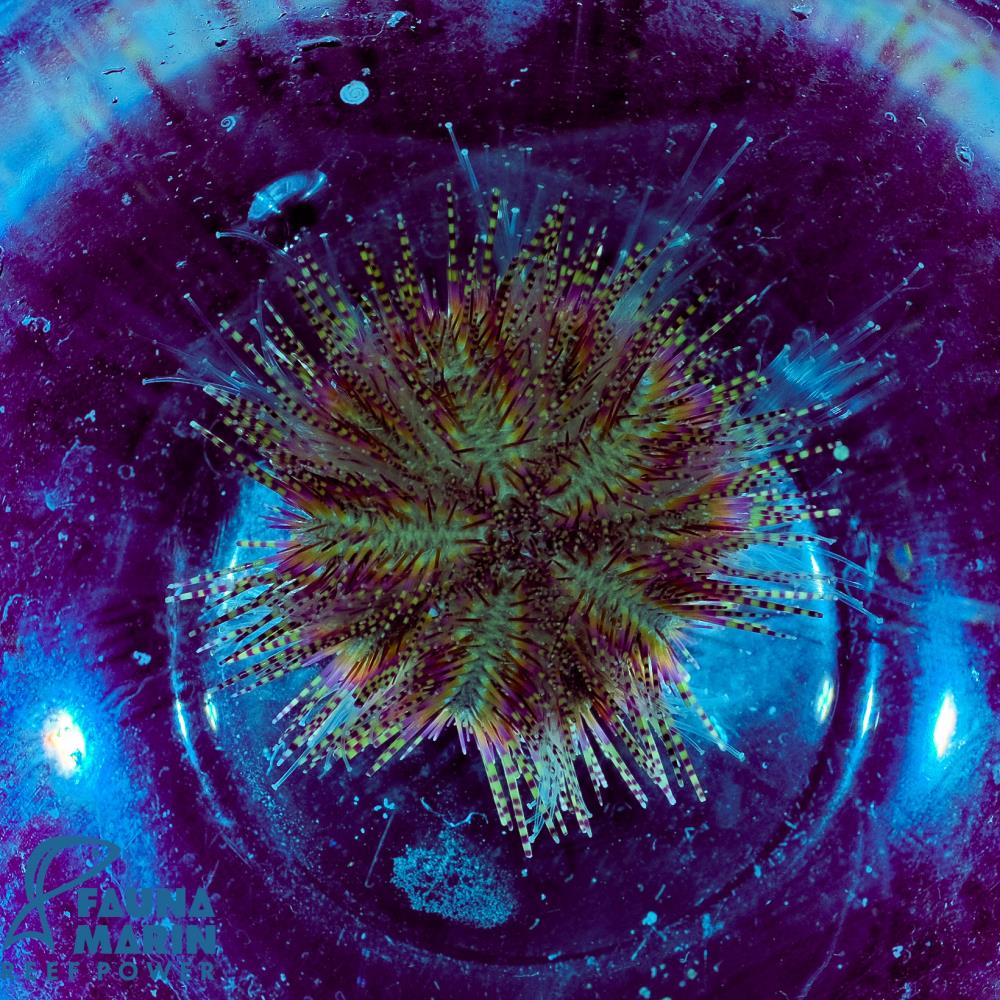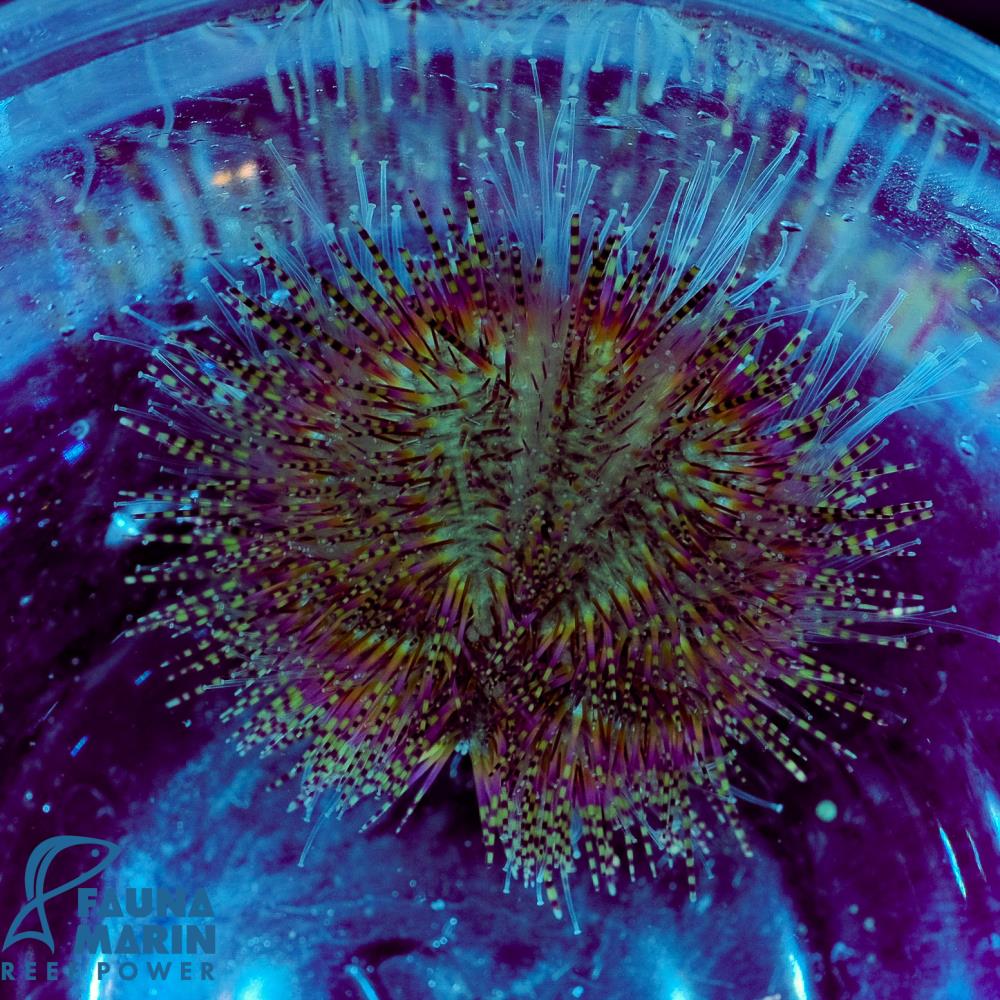Salmacis Bicolor
Product information "Salmacis Bicolor"
Salmacis bicolor – Two-toned Sea Urchin
Salmacis bicolor is a sea urchin species belonging to the family Temnopleuridae, found in the western Indian Ocean and the Red Sea.
The name is derived from Salmacis, a nymph in Greek mythology, and the Latin word "bicolor" (two-colored).
A highly manageable urchin that diligently performs its duties. It is a good algae eater but also consumes meaty food. Like Mespilia globulus or Salmacis Pink Lady, it belongs to the "collector urchins," which carry things like algae, rocks, snail shells, pebbles, etc., to camouflage themselves.
Salmacis bicolor is a very beautiful sea urchin, but it is reported to nibble on soft corals and possibly stony corals (Acropora) if it doesn't find enough algae to eat.
According to descriptions, its spines are brightly banded in red-yellow. The sea urchin is found in coastal areas up to depths of 122m.
When introducing it into the aquarium, please acclimate it carefully, as all sea urchins are sensitive to sudden changes in density.
General information about Salmacis bicolor:
- Scientific Name: Salmacis bicolor
- Common Name: Two-toned Sea Urchin
- English Name: Two-toned Salmacis Urchin, Red Bell's Urchin
- Distribution: China, India, Indian Ocean, Indo-Pacific, Japan, Java, Kenya, Madagascar, Maldives, Mauritius, Mozambique, East Africa, Pakistan, Philippines, Red Sea, Seychelles, Singapore, South Africa, Tanzania, Vietnam
- Size: 5cm – 8cm
- Temperature: 24°C - 28°C
- Food: Algae, occasionally: Hydrozoan polyps, Invertebrates (Invertebrates), Coral (polyps) = coralivore
- Aquarium: from 150 liters
- Note: A very good algae eater that, when hungry (i.e., when no algae is available), may also consume coral polyps. We keep this sea urchin in our coral facilities and have not observed such incidents.
Crucial for the care of corals and fish is the constant maintenance of salinity and the use of high-quality sea salt, such as Fauna Marin Professional Sea Salt. Salinity should always be between 34/35‰, or 1.022 and 1.024 density. Regular density checks are a must in marine aquariums.
For more information about our animals and application guidelines for our products, visit https://www.faunamarin.de/support-downloads/
Also, check out our YouTube channel: Fauna Marin YouTube Channel


